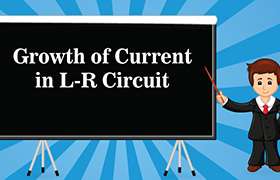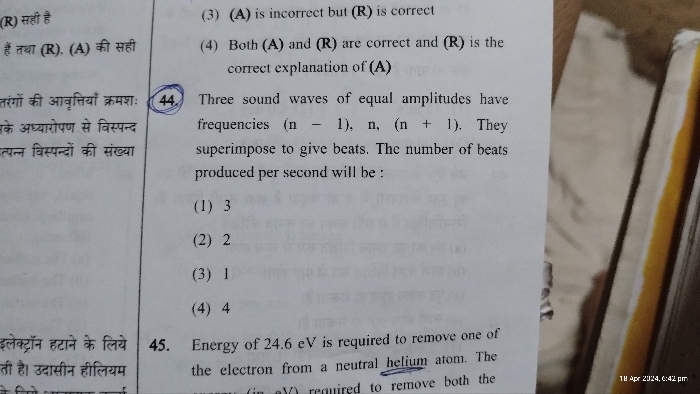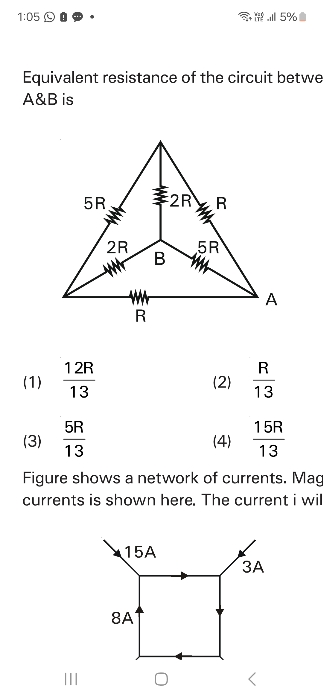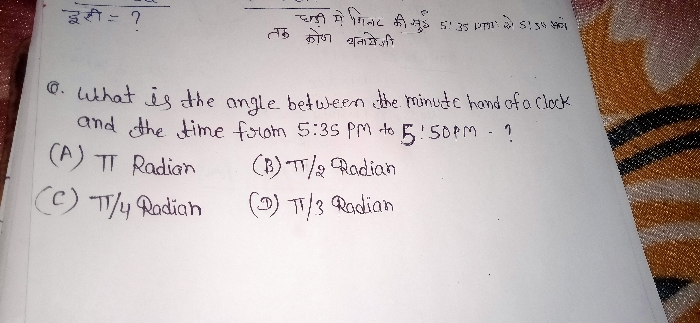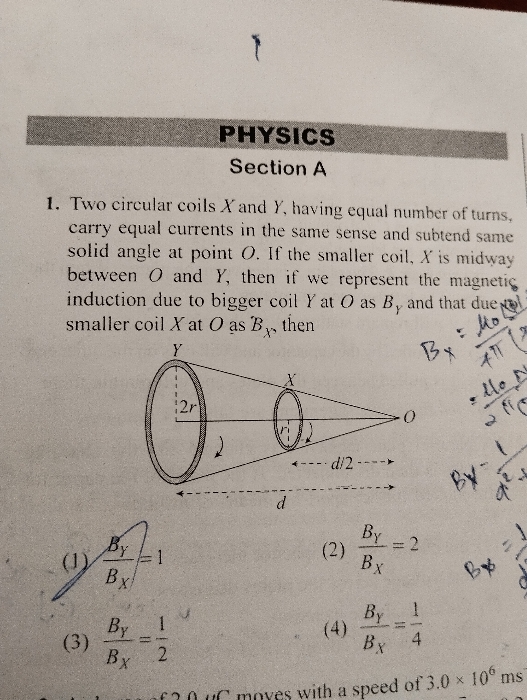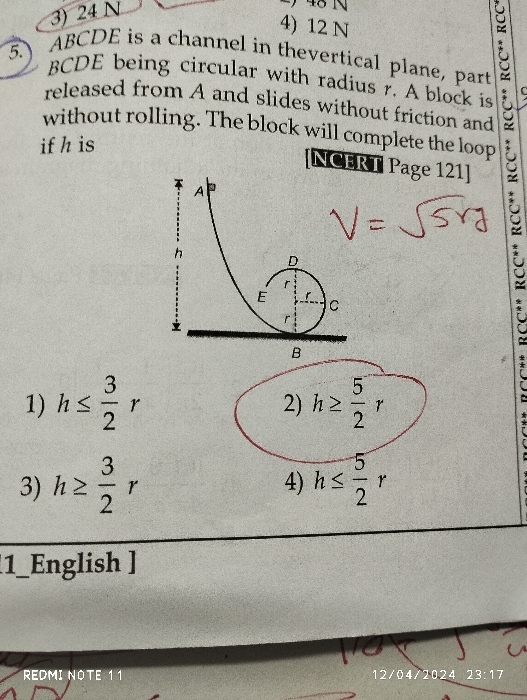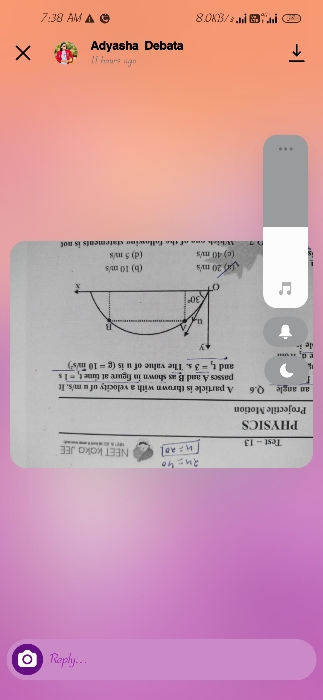NEET Class neet Answered
⭕ Answer in detail... Thanks
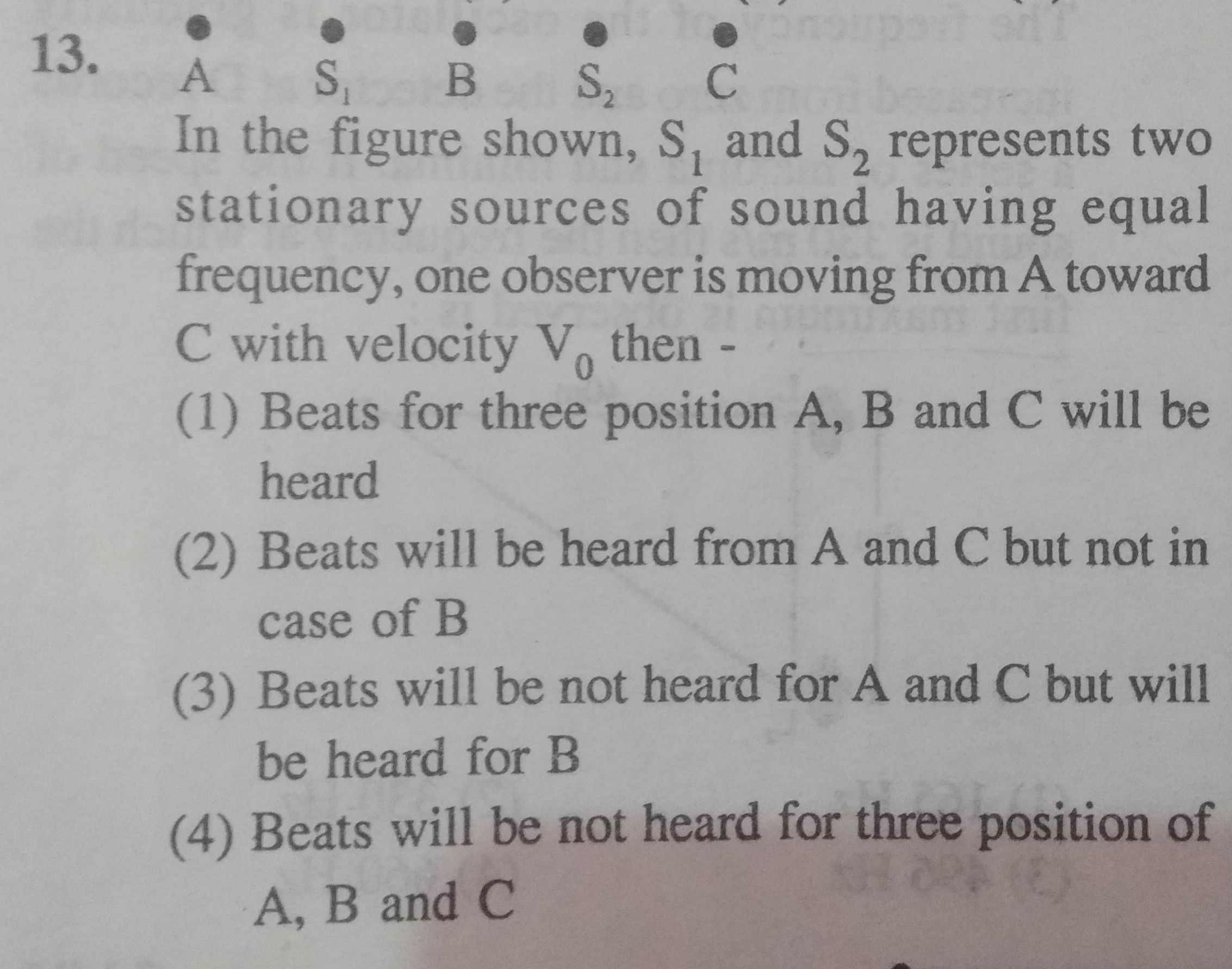
Asked by jhajuhi19 | 23 Nov, 2020, 02:20: AM
At position A , observed frequencies of sound from both sources of sound is given as
fS1 = fS2 = [ 1 + (vo / v ) ] fs
where vo is velocity of observer, v is speed of sound and fs is the actual frequency of sources S1 and S2 .
(Observer is moving towards both sources )
Since both observed frequencies are same beats will not be heard.
----------------------------------------------
At position B , observed frequency of sound from source-1 is given as
fS1 = [ 1 - (vo / v ) ] fs
(Observer is moving away from Source S1 )
At position B , observed frequency of sound from source-2 is given as
fS2 = [ 1 + (vo / v ) ] fs
(Observer is moving towards Source S2 )
Since observed frequencies are slightly different ( fs2 > fs1 ) , beats will be heard.
--------------------------------------------------
At position C , observed frequencies of sound from both sources of sound is given as
fS1 = fS2 = [ 1 - (vo / v ) ] fs
(Observer is moving away from both sources )
Since both observed frequencies are same beats will not be heard.
---------------------------------------------------
Answer to the question :- (3) Beats will not be heard at A and C , but will be heard at B
Answered by Thiyagarajan K | 23 Nov, 2020, 09:47: AM
Application Videos
NEET neet - Physics
Asked by praveenpriya000079 | 18 Apr, 2024, 07:24: AM
NEET neet - Physics
Asked by gouranshi84 | 17 Apr, 2024, 05:23: PM
NEET neet - Physics
Asked by sojusvi | 17 Apr, 2024, 01:12: PM

